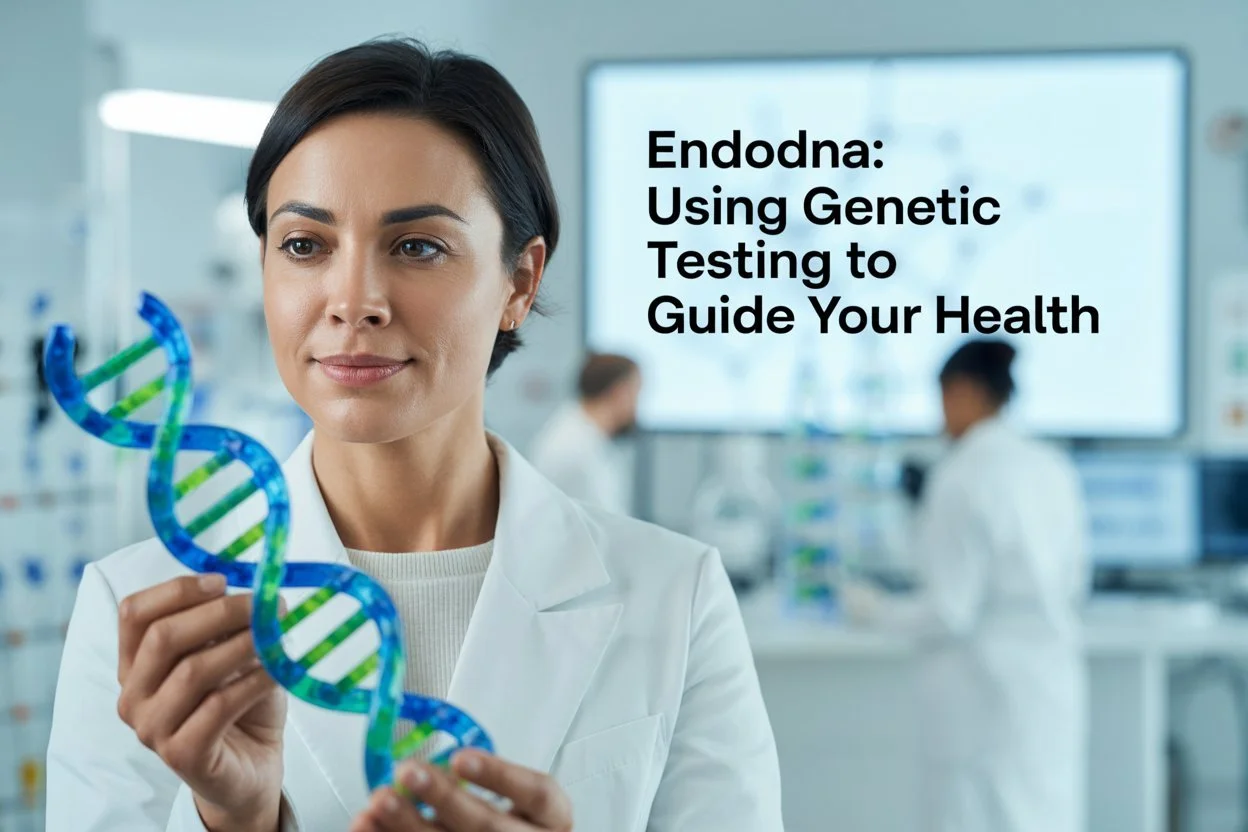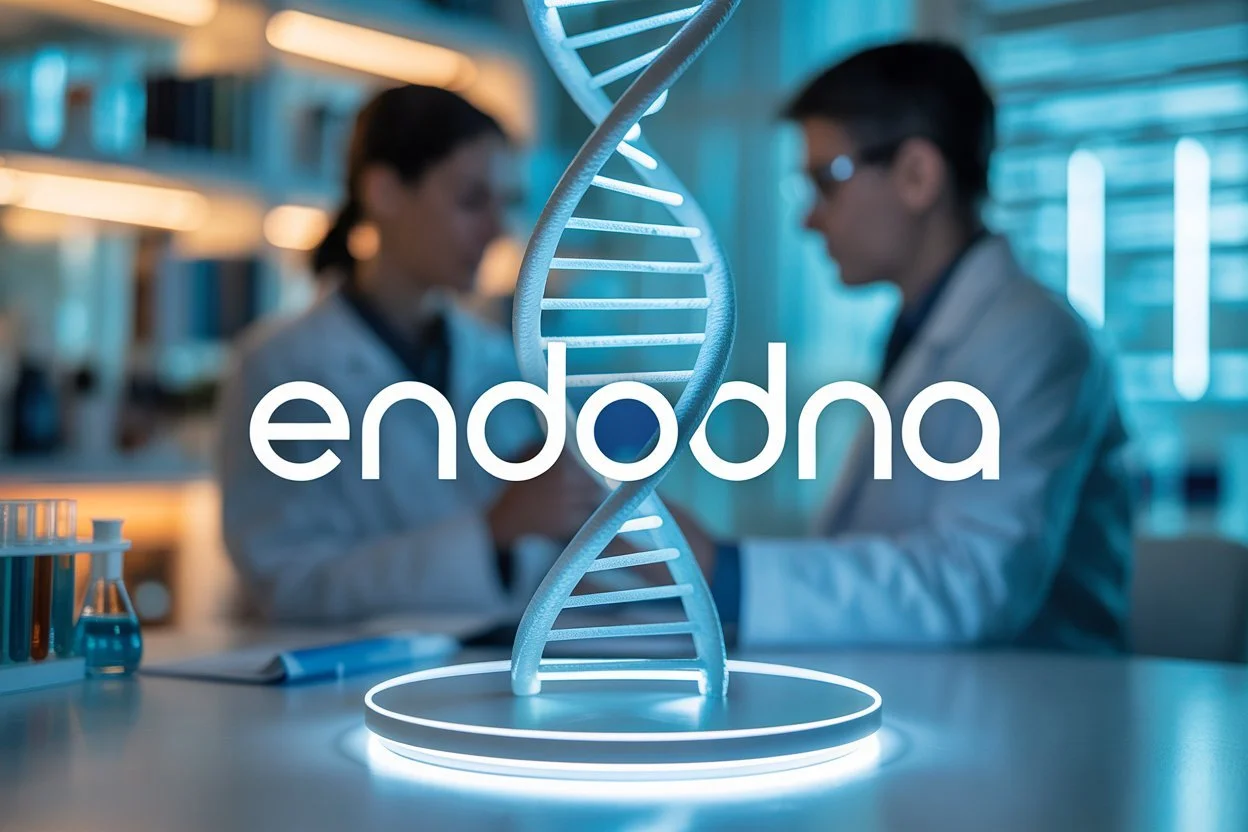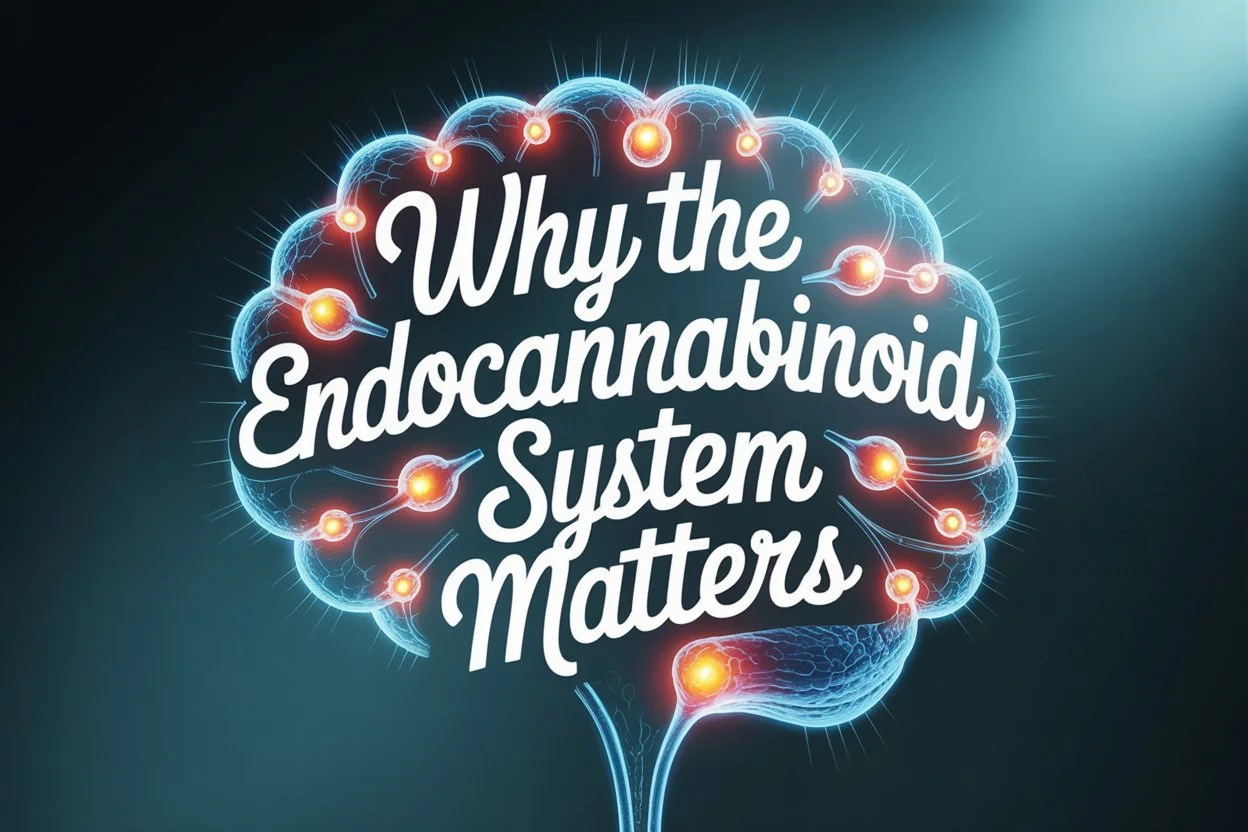EndoDNA: Using Genetic Testing to Guide your Health
Table of Contents
Intro
The Story Behind EndoDNA
What is EndoDNA?
How the Genetic Test Works
Why the Endocannabinoid System Matters
Why the Endocannabinoid System Matters
Benefits for Healthcare Providers
Conclusion
EndoDNA: Using Genetic Testing to Guide your Health
Healthcare often feels like trial and error. A medication, supplement, or treatment plan that works wonders for one person may leave another struggling with side effects or no improvement at all. This hit-or-miss approach can be frustrating and exhausting, especially when the goal is to feel better and live healthier.
That is where genetic testing comes in. By looking at your unique DNA, science can reveal why certain treatments do not work for you, why you may be sensitive to specific foods, or even why your body responds to stress the way it does. Instead of guessing, you can have a clearer roadmap for making decisions about your health.
In a recent podcast conversation with Len May, founder of EndoDNA, we explored how your DNA can act like a personal health GPS, showing you where the roadblocks are and how to navigate around them. This post unpacks the biggest lessons from the podcast and explains why personalized health guided by genetics may be the future of medicine.
The Story Behind EndoDNA
Len May’s path to EndoDNA began with a deeply personal struggle. As a teenager he was expelled from home because of cannabis use, and that rupture forced him to grow up quickly. He bounced between couches, tried to keep up with school, and searched for stability. During that time he saw how easily a person could be labeled as a problem instead of being understood as a person with unmet needs.
He was later diagnosed with ADHD and started medication. The medicine helped him focus in class and at work, but it also flattened how he felt. He could complete tasks, yet he felt less like himself. This created a painful tradeoff. Do you choose focus and lose your spark, or keep your spark and lose your focus? That question pushed him to look for options that could support both attention and well-being without dulling emotion.
At home he watched his mother and grandmother manage long lists of prescriptions. Each new pill was meant to solve a symptom, but the combination often created new side effects. This was another kind of trial and error that did not feel sustainable. Seeing people he loved cycle through drugs and dosages convinced him that the real problem was not only the conditions themselves. The problem was the lack of personalization. Bodies are different. Responses are different. Treatment should reflect that.
These experiences turned into a mission. Len became curious about why bodies respond so differently to the same substance. He began exploring genetics and the endocannabinoid system, the network in the body that helps keep things in balance. He wanted a way to translate complex science into simple, practical guidance that anyone could use with their healthcare provider.
In 2017 he created EndoDNA to do exactly that. The idea was straightforward. Use a person’s DNA to map out their likely responses, then give them and their clinician a plan that fits their biology. Instead of guessing, start with data. Instead of forcing a one size fits all plan, build a path that respects individual differences.
EndoDNA grew from his belief that people deserve clarity. If you know your genetic tendencies, you can choose foods, supplements, cannabinoids, or medications with more confidence. You can talk to your doctor with better questions. You can pursue relief without feeling like a test subject.
Len shared the raw details of this journey in the podcast, and it is worth a listen if you want the behind the scenes story.
What is EndoDNA?
EndoDNA is a company built on the idea that your health should be as unique as your DNA. Instead of relying on a one-size-fits-all model, EndoDNA uses genetic testing to reveal how your body is wired and how it may respond to certain foods, supplements, medications, or cannabinoids. The focus is not just on symptoms but on uncovering the root patterns that shape your overall health.
At its core, EndoDNA combines two powerful tools: genetic testing and endocannabinoid science. Genetic testing allows scientists to study tiny variations in your DNA, called SNPs (single nucleotide polymorphisms), that can influence how your body processes substances, manages stress, or reacts to inflammation. The endocannabinoid system, which helps regulate balance across the body, provides the framework for interpreting those results. Together they form a picture of your health that is highly personal and actionable.
An easy way to think about it is to imagine your DNA as a roadmap. Every road, turn, and intersection represents a different biological process. Some routes are smooth and fast, while others are full of potholes or detours. Without a map, you may get lost or waste time trying different paths. With a map, you can see where the roadblocks are and plan your route more effectively. EndoDNA offers that map for your health, showing you where you may face challenges and how you can navigate around them.
The mission of EndoDNA is clear. It is to empower people to understand their own biology so they can make better choices and work with their healthcare providers more effectively. When you know your genetic tendencies, you are no longer in the dark. You can choose nutrition strategies, supplements, lifestyle changes, or therapeutic options that match your body rather than working against it.
In the episode, Len explains this with simple and relatable examples that make the science easy to grasp. If you want to hear him break it down in his own words, definitely check out the full podcast.
How the Genetic Test Works
Below is a clear, step-by-step explanation of how a service like EndoDNA typically turns a cheek swab into an actionable health plan, followed by the main types of insights the test can reveal.
Step 1 — Order the kit and collect the sample: You begin by ordering a test kit online or through a clinician. The kit contains a sterile cheek swab and simple instructions. To collect the sample you rub the swab along the inside of your cheek for the recommended amount of time, then seal it and return it in the pre-paid envelope. The collection is noninvasive, quick, and can be done at home or in a clinic.
Step 2 — Lab accessioning and DNA extraction: When the lab receives the sample, technicians log it into their system and check the sample quality. The cells on the swab are processed to extract DNA. The lab measures how much DNA was recovered and runs quality checks to make sure the sample is usable. If the sample does not meet quality standards the lab will request a recollection.
Step 3 — Genotyping on a high-density array: The purified DNA is analyzed using a genotyping platform, which reads hundreds of thousands of predefined genetic markers called single nucleotide polymorphisms, or SNPs. These platforms are designed to detect common variants that research has linked to drug metabolism, nutrient processing, inflammation, hormone function, and many other biological processes. The result of this step is a raw genotype file that shows which variant a person carries at each tested location.
Step 4 — Bioinformatics processing and quality control: Raw genotype data is processed with bioinformatics pipelines. This includes additional quality checks, alignment to reference data where needed, filtering out unreliable calls, and sometimes imputation to infer nearby variants. The cleaned data are then annotated: each relevant SNP is mapped to known scientific findings and to the biological pathways that EndoDNA focuses on, including genes involved in the endocannabinoid system.
Step 5 — Clinical interpretation and algorithmic scoring: Specialized software and clinical scientists translate the annotated genetic data into human-readable findings. This can include single gene results that affect medication metabolism, aggregated scores that estimate tendencies such as inflammatory response, and interpreted patterns related to hormone regulation or stress response. The interpretation emphasizes evidence-based links between variants and likely physiological effects, and it flags where those links are strong versus where they are still emerging.
Step 6 — Secure reporting and clinician integration: The final output is a report designed for both the individual and their healthcare provider. Reports typically summarize key findings, explain what each finding might mean in plain language, and offer suggested next steps. These suggestions can include tests to confirm a clinical suspicion, lifestyle changes, nutritional adjustments, supplement options, or medication considerations. Reputable services protect data with encryption and follow privacy standards such as HIPAA and GDPR when required, and they provide clinician portals so a medical professional can review the results in context.
Step 7 — Action, monitoring, and follow-up: Genetic results are used as a starting point for a shared plan between patient and clinician. Providers may adjust medication selection or dosing based on pharmacogenomic markers, try nutritional or supplement strategies for identified sensitivities, or introduce targeted cannabinoid options informed by endocannabinoid-related genetics. Progress is monitored clinically and, when available and appropriate, through follow-up testing such as functional labs or epigenetic markers to measure response over time.
Important limits and caveats
Genetic testing provides probabilities and tendencies, not absolute answers. A variant that increases risk or sensitivity does not guarantee a specific outcome, and many results must be interpreted alongside medical history, current medications, lab tests, and lifestyle factors. Environmental influences, diet, stress, and epigenetic changes all shape actual health outcomes. For these reasons reports are intended to inform discussions with qualified healthcare providers rather than replace them.
Types of insights the test typically reveals
Medication metabolism and pharmacogenomics: Which drugs you are likely to process quickly, slowly, or normally. This can help explain unexpected side effects or lack of benefit. Common gene families involved include CYP enzymes.
Nutrient and food sensitivities: Tendencies toward difficulties processing certain nutrients or foods, which can guide dietary changes.
Hormone and reproductive health signals: Genetic patterns that influence hormone production, sensitivity, or the way hormone changes may present, for example during menopause transitions.
Inflammation and immune response: Markers that indicate a higher or lower tendency toward chronic inflammation, which can shape choices around diet and anti-inflammatory strategies.
Stress response and mental health tendencies: Variants connected to neurotransmitter pathways or stress reactivity, which can inform approaches to anxiety, sleep, and mood support.
Endocannabinoid system insights: Variants in genes that influence how the endocannabinoid system functions, which is the core focus of EndoDNA for tailoring cannabinoid-related support.
Actionable lifestyle suggestions: Practical recommendations for nutrition, supplement types and dosing ranges, and therapy options that are more likely to be effective given your genetic profile.
The podcast walks through these steps in more detail; it is a great listen if you are curious about what the testing actually shows.
Why the Endocannabinoid System Matters
The endocannabinoid system is one of the most important yet often overlooked systems in the human body. It functions like a master regulator, keeping everything in balance. Scientists call this balance “homeostasis.” When your body is under stress, when your immune system is overactive, or when your mood feels off, the endocannabinoid system works quietly in the background to restore harmony.
Your genetics play a big role in how well this system works. Some people naturally produce more endocannabinoids, while others may have variations in their genes that make their system less efficient. Environment also matters. Diet, stress, sleep, and lifestyle choices can either support or disrupt how effectively the system maintains balance.
This is where cannabinoids come into the picture. Cannabinoids are compounds found in cannabis, hemp, and even certain foods. They interact with receptors in the endocannabinoid system, essentially helping the body do its balancing work more effectively. This does not mean cannabis is a one-size-fits-all solution. Instead, it means understanding your genetic makeup can help determine what type of support your system might need.
Len’s explanation in the podcast breaks down this science in a very simple way. He uses examples that show why the endocannabinoid system is not just about cannabis, but about a much bigger picture of health and wellness. His insights make it easy for anyone to understand, even without a science background. You do not want to miss that part of the conversation.
Understanding the role of the endocannabinoid system helps explain why EndoDNA’s approach is so powerful. By connecting your unique genetics to this vital system, the test can uncover personalized strategies for better health.
Why the Endocannabinoid System Matters
The endocannabinoid system is often called the body’s balance system because it helps regulate key functions such as mood, appetite, sleep, stress, and even immune response. Its main role is to keep the body in a state of balance, also known as homeostasis. Without it, many of our internal systems would struggle to communicate and function smoothly.
Genetics and environment both play a role in how this system works. For example, some people have genetic variations that affect how their receptors respond, which can make them more sensitive to stress or certain substances. Lifestyle factors like diet, sleep, and daily stress can either strengthen or weaken how effectively the system does its job.
Cannabinoids—compounds found in cannabis, hemp, and even certain foods—are especially important because they interact with the receptors of the endocannabinoid system. They act almost like keys fitting into locks, helping the body restore balance when something is off. However, because every person’s genetics are different, not everyone responds to cannabinoids in the same way. This is why a personalized approach, like the one EndoDNA offers, can be so valuable.
Benefits for Healthcare Providers
EndoDNA is not only transforming individual health journeys, it is also changing the way healthcare providers approach treatment. Many providers are beginning to embrace genetic testing as a way to cut down on guesswork and deliver more precise care. Instead of relying on trial and error, they can use genetic insights to recommend treatments that are more likely to work for each patient.
This precision leads to better patient outcomes and greater trust between provider and patient. When people feel that their care is tailored to them rather than based on averages, they are more likely to stay engaged in their health journey.
One example Len shared in the podcast involved menopause. Instead of treating menopause as a one-size-fits-all stage of life, EndoDNA testing can reveal different biotypes. This means providers can offer specific strategies for managing symptoms, which improves both quality of life and overall health for women going through this transition.
The episode also touches on how providers can integrate this into their practice, which is especially valuable if you are a healthcare professional.
The Future of Personalized Health
Personalized medicine is still in its early stages, but the potential is enormous. One exciting area Len discussed is biological age tracking. Unlike chronological age, which is measured in years, biological age looks at how your body is actually aging on a cellular level. With genetic insights, it is possible to identify whether your body is aging faster or slower than expected and take proactive steps to improve longevity and vitality.
Another promising direction is the expansion of DNA-based health solutions. In the future, more people will have access to genetic tools that can guide nutrition, stress management, hormonal health, and even preventative care. This shift means fewer generic treatments and more strategies tailored to individual needs.
In the podcast, Len shares his vision for the next 10 years of personalized medicine. Hearing it in his own words gives a powerful sense of what is possible, and it is worth listening to that part of the conversation.
Conclusion
Personalized health powered by DNA is no longer an idea that belongs in the future. It is already here, and it is changing the way people approach their wellness and medical care. The old trial-and-error model, where patients cycle through different treatments hoping one will work, is slowly being replaced by strategies that are guided by science and tailored to each individual.
This is the core message from Len May’s work with EndoDNA. By understanding your genetic blueprint, you gain a clearer map of what your body needs to stay balanced, resilient, and healthy. It is not about fitting into a one-size-fits-all plan but about uncovering what works best for you.
If this blog sparked your curiosity, the full podcast episode goes much deeper. Len shares the science in simple terms, tells powerful stories of transformation, and paints a vision of what the next decade of personalized medicine could look like. Tune in here [insert link].
The future of healthcare is not trial and error. It is a future tailored to your DNA, and that future is already unfolding today.
Listen to the full episode and discover how your DNA could be the key to better health.



